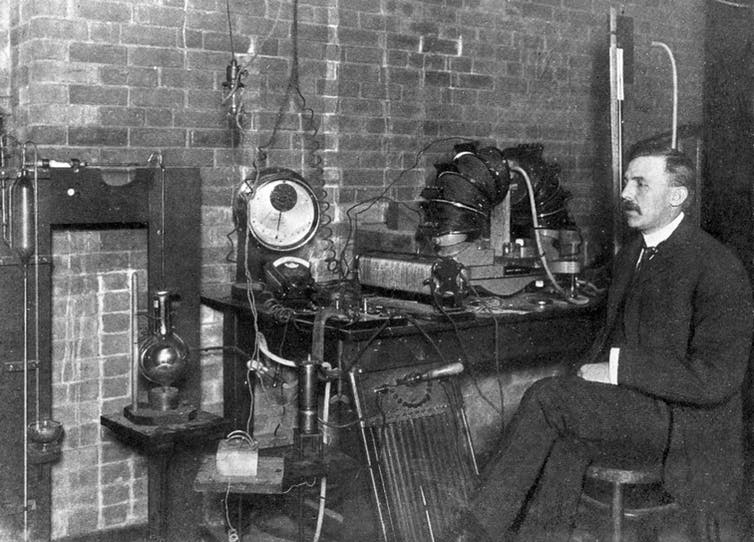
Curious Kids is a series for children of all ages. If you have a question you’d like an expert to answer, send it to [email protected].
How do you figure out how long ago fish were created? Hundreds of millions of years is a long time ago. – Josh, age 11, Ephrata, Pennsylvania
The oldest fossils of animals resembling a fish date back between 518 million and 530 million years ago. Discovered in China and called Haikouichthys, these animals were about an inch long (2.5 cm) and had a head with seven to eight slits at its base that looked like gills. They also had a distinct spine surrounded by muscles.
But there are ways Haikouichthys did not resemble any modern fish. For example, they didn’t have a jaw. Instead, their mouth was a cone-like opening similar to the ones seen in modern hagfish and lampreys. They also appear not to have had side fins.
Even though scientists like me weren’t around to see for ourselves what was happening on Earth so long ago, we use geologic clues to figure out what animals lived when. Here’s how we sort out very ancient timelines and even put dates on fossils like Haikouichthys.
Measuring in the millions
To figure out how long ago fish first appeared on Earth you need a way to measure really, really long time intervals. Clocks measure short intervals, like seconds, minutes and hours. Calendars measure longer intervals, like days, months and years. What can you use to measure millions of years?
Radiometric dating is the method that scientists use to calculate the passage of time in millions of years. To determine the age of rocks and fossils, scientists measure the type of atoms they are made of.
You might know that atoms are the building blocks of molecules, which make up everything around you – grass, cement, even air. While most atoms are very stable, some, called radioactive atoms, are unstable. Over long periods of time, they spontaneously break down into more stable atoms.
Uranium is one of these radioactive atoms. It breaks down very slowly into lead. Both uranium and lead atoms can be found naturally in rocks and minerals in very, very low amounts.
Nuclear physicists have calculated that it would take 700 million years for one pound of uranium to break down into half a pound of lead. This rate of decay occurs at such a predictable rate that scientists can use it to calculate fairly accurately how old rocks and fossils are.

Ernest Rutherford at McGill University, 1905.
Unknown, published in 1939 in ‘Rutherford: being the life and letters of the Rt. Hon. Lord Rutherford’/Wikimedia Commons, CC BY
The idea for radiometric dating first occurred to a New Zealand scientist named Ernest Rutherford in 1904. His idea was to measure the number of uranium atoms and lead atoms in a rock and compare them. He predicted that an older rock would have more lead and less uranium than a younger rock…